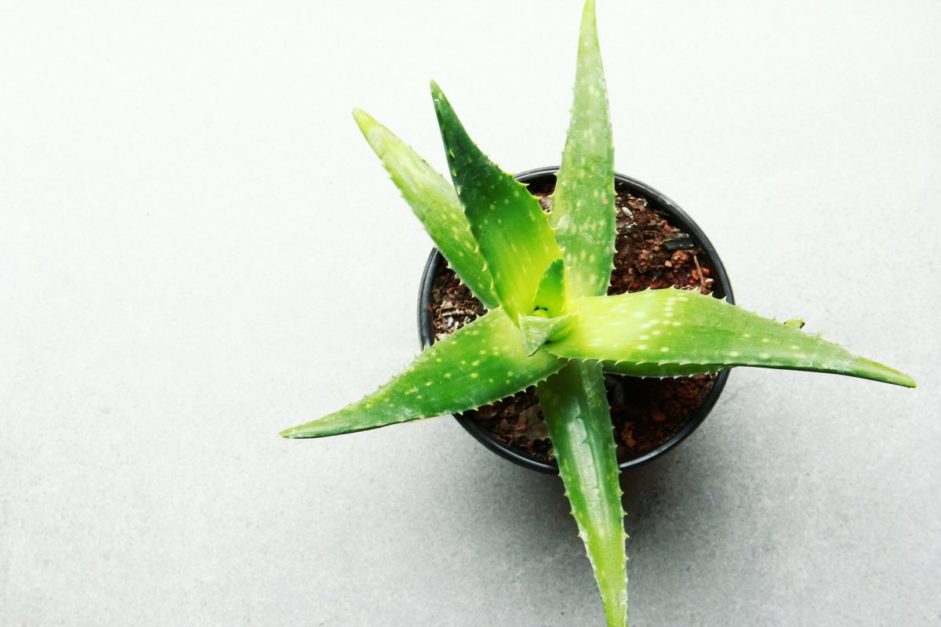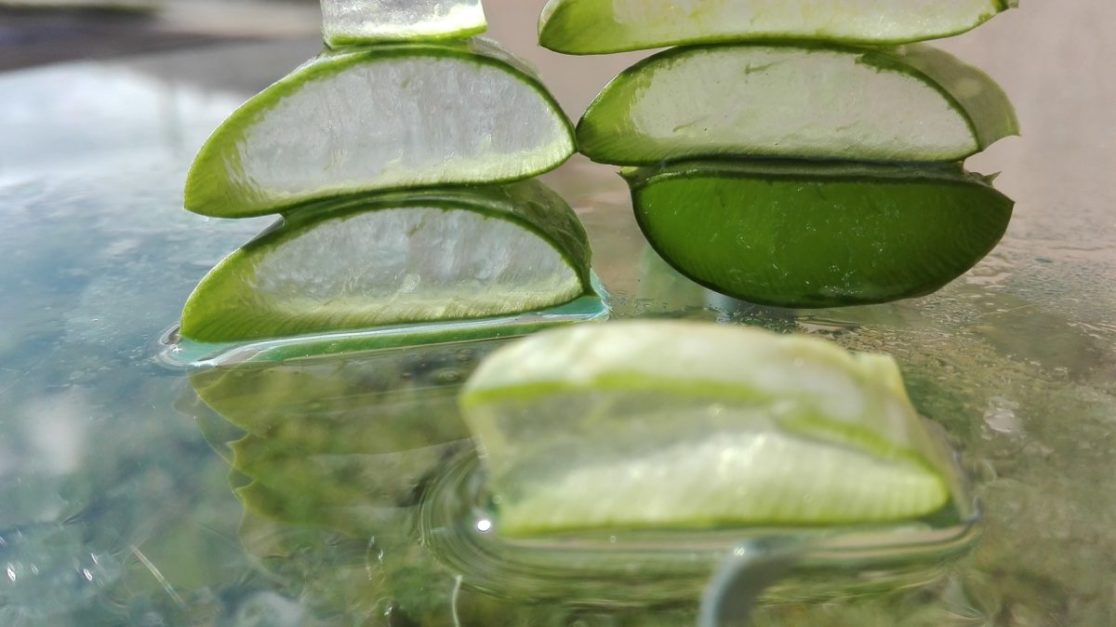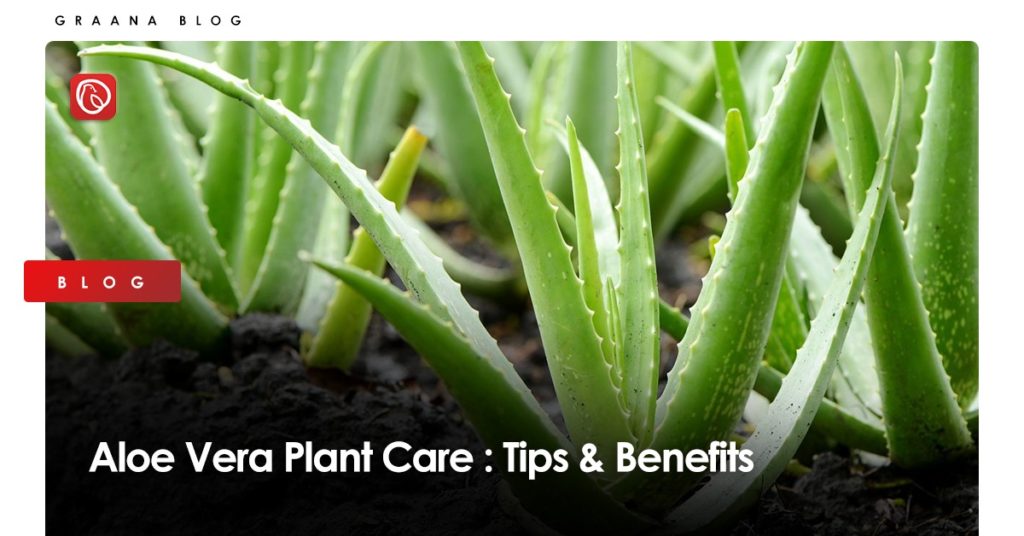Aloe vera is a succulent plant species and is a popular houseplant. With their serrated leaves and thick stems, they come with a number of benefits. If you are interested in growing your own aloe vera at home, Graana.com has prepared a detailed guide below.
How to Grow Aloe Vera Plants at Home

Growing aloe vera plants at home is easy and inexpensive. The plants will provide you with an endless supply of fresh aloe vera juice that you can use in beauty products, topical treatments, and more.
- Choose soil that drains well, but does not dry out too quickly. If you are planting a large number of aloe vera plants, use a raised bed for optimal drainage. You can also use organic potting soil or composted manure as a substitute for regular garden soil.
- Be sure to plant your seeds directly into the soil so that they do not get mouldy before they sprout. Cover the seeds with approximately 1/2 inch of soil and water them well before planting them in their container or bed of soil.
- Make a small hole in the centre of the pot’s well-draining potting mix before filling it.
- Place the plant in the new pot after carefully removing it from the old one.
- Thoroughly water it and let it drain before placing the plant in a sunny area.
How to Propagate Aloe Plants

One effective way to propagate these plants is by pups or offsets. Pups are miniature replicas of the parent plant, forming around the base of the aloe plant.
- Slowly twist the pup off of the parent plant.
- After you have removed it, let it take a few days to calluses.
- Re-pot your pup in a cactus mix that drains effectively.
Benefits of Aloe Vera Plants
Following are some of the biggest benefits you can enjoy by growing aloe vera plants.
Heal Burns
The most important benefit of an aloe vera plant is that it can heal burns as it contains an anti-inflammatory agent.
Aloe vera plants are grown in different countries and regions, but they all have similar characteristics that make them useful in treating various types of skin conditions.
You can apply aloe vera gel directly on the burn area or mix it with other ingredients like witch hazel or coconut oil to make a salve that you can massage into the skin.
Promotes Oral Health
Aloe vera plant is one of the best plants to use for your oral hygiene needs. It has been used as an alternative medicine for centuries and has long been used in folk medicine to cure various ailments, including toothaches and mouth sores.
The reason why aloe vera works so well is that it contains natural chemicals that can kill germs and help reduce inflammation in the mouth. It also contains enzymes that help break down plaque and tartar build-up on teeth, making it easier to remove them with a toothbrush or dental floss.
Lowers Blood Sugar Levels
Aloe vera is not only used to make medicine and food, but it is also a natural way to lower blood sugar levels.
In fact, many people use aloe vera juice or gel on their skin as a way to treat or prevent diabetes. It can also help improve blood sugar control in those with hypoglycemia, or low blood sugar levels.
The reason for this is that aloe vera contains a compound called glycosides that help keep your body from absorbing sugar from your food and drink into your bloodstream. This lowers your body’s overall glucose level and helps prevent over-absorption by the body’s cells.
Improves Digestive Health
Aloe Vera is also especially helpful for people with digestive issues, such as diarrhoea and constipation.
It is an excellent source of vitamins and minerals, such as vitamin C and potassium. It also contains amino acids that are important for metabolism, energy production, and healthy blood pressure levels.
Helps Lose Weight
The aloe vera plant is a nutritious and effective weight-loss supplement. It contains over 200 bioactive compounds that can help reduce the amount of stored fat in your body by stimulating the release of three hormones: adiponectin, leptin, and ghrelin. These hormones help to regulate appetite, inhibit hunger, and increase fat burning.
Treats Acne Scars
Aloe vera is an effective acne treatment because it contains many nutrients that help heal blemishes and other skin conditions.
The gel-like substance within the leaves of the plant acts as a natural moisturiser and can help heal dry, red and irritated skin. It also contains antioxidants that fight free radicals that contribute to damaged skin cells, which improves the appearance of blemishes and scars.
Common Issues
Following are some of the most common issues you can face while growing aloe vera plants.
- Insufficient light
- Overwatering
- Pests and diseases
- Overwintering
Insufficient Light
Insufficient light is one of the most common issues that you can face while growing aloe vera plants. Due to the fact that this plant needs plenty of sunlight and thrives in heat, it is important to provide adequate light for your plant.
The best way to ensure that is by using a grow light. If you don’t have access to a grow light, then you can try using fluorescent lights as they produce more lumens than regular incandescent bulbs. However, fluorescent lights are not ideal as they tend to burn the leaves of aloe vera plants or cause bacterial infections in them.
Overwatering
If you are watering your aloe vera plant too much, the roots will not be able to absorb enough water and the plant will shrivel as a result. You should never water your aloe vera plant during the night, as that is when it needs the most water.
If you have a black spot on your aloe vera plant, it means that the plant needs more sunlight or less shade. This can be due to overwatering or not using enough fertiliser on your plant.
Pests and Diseases
The following are some of the most common pests and diseases that can affect your aloe vera plants:
- Spider mites: These small white spider-like insects feed on the undersides of leaves and cause yellowing and scorching of leaves. There are several remedies available for these pests including insecticidal soap, neem oil, or horticultural oils.
- Mealy bugs: Mealy bugs are soft-bodied insects that feed on sap and leaves, causing discoloration on the leaves as well as webbing between leaves. You can control mealy bugs by spraying neem oil around the base of each plant or applying horticultural oil directly onto them.
- Scale insects: Scale insects look like small white bumps on the underside of leaves causing frass (poop) to accumulate over time, affecting the appearance of your plants. You can control the scale with horticultural oils or insecticidal soap applied directly onto them when they are still small enough to kill.
Overwintering
Overwintering is a process during which the plant goes dormant and ‘rests’ in the winter season. You can do it in two ways: either by cutting an aloe vera plant into sections and putting it in a cool place or by separating its individual leaves and putting them in a cool place.
The leaves of an aloe vera plant are covered with a thin layer of wax, which is what protects them from drying out during the winter months. Overwintering is best done when temperatures are consistently below freezing point (0°C) or slightly above. This will ensure that only the outermost layers of leaves are damaged.
You should store the leaves in a dark place away from direct sunlight or other sources of heat such as heating systems. The ideal temperature for overwintering aloe vera plants is 10°C (50°F). It is best to do this in late autumn or early spring when there is no risk of frost damage.
For more related guides, visit Graana Blog.




